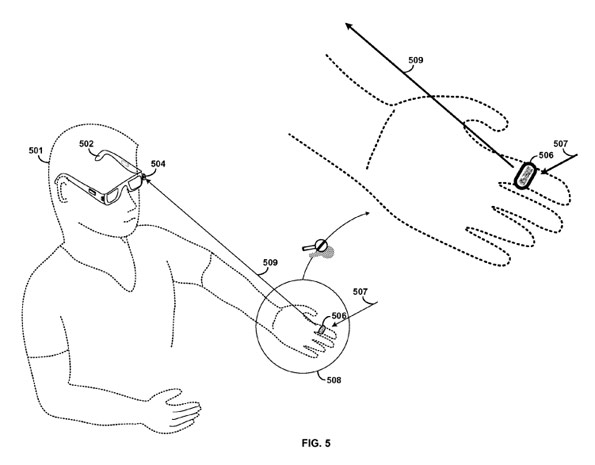When we first reported on Google's Project Glass last month, we were impressed by the firm's visions for an intuitive heads-up display, however, both ourselves and our readers were left wondering, if and how, it may be possible to perform advanced actions typically possible only with a keyboard and mouse.
Voice control would be one way, but it's far from a perfect technology and not always appropriate, likewise, a Kinect-style gesture system would be both large and liable to interference, by being sensitive to the patterns it emits. What's more, both these technologies require large amounts of compute power, which, even if available on a mobile device, perhaps through OpenCL and GPGPU compute, would no doubt zap away a device's battery life.

Google thinks it may have the answer to this conundrum, at least for the foreseeable future, with a patent filed back in September, though only just published, the firm depicts the use of accessories such as rings, bracelets or even fingernail attachments and decals as gesture markers. The idea would be to use infra-red reflective patterns on these items, allowing them to stand-out from the rest of scene to an infra-red camera, yet remain invisible to the naked eye. Whilst it's possible Google intends to suggest entire items be coated in such a manner, in theory the technology could be an invisible tag stamped onto existing products (or fingers!).
This approach would allow well established visual recognition techniques to be used, such as those employed already using standard optical markers, only in theory, the process would be faster as non-infra-red sources can be swiftly filtered from data that is to be processed; usefully, the technique would also allow gesture control in complete darkness, if an infra-red emitter is present, not to mention the potential for a basic night-vision HUD.
Google's Project Glass is really getting us excited, how about our readers?













